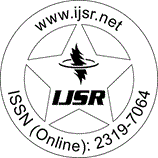Downloads: 152
India | Electrical Engineering | Volume 6 Issue 1, January 2017 | Pages: 1465 - 1471
Analysis of HVDC Power Transmission Line with Unique Power Control Room
Abstract: A high-voltage, direct current (HVDC) electric power transmission system (also called a power super highway or an electrical super highway) uses direct current for the bulk transmission of electrical power, in contrast with the more common alternating current (AC) systems. For long-distance transmission, HVDC systems may be less expensive and suffer lower electrical losses. For underwater power cables, HVDC avoids the heavy currents required to charge and discharge the cable capacitance each cycle. For shorter distances, the higher cost of DC conversion equipment compared to an AC system may still be justified, due to other benefits of direct current links. HVDC allows power transmission between unsynchronized AC transmission systems. Since the power flow through an HVDC link can be controlled independently of the phase angle between source and load, it can stabilize a network against disturbances due to rapid changes in power. HVDC also allows transfer of power between grid systems running at different frequencies, such as 50 Hz and 60 Hz. This improves the stability and economy of each grid, by allowing exchange of power between incompatible networks.
Keywords: Power Transmission Line, Flexible AC Transmission Systems FACTS, High Voltage Direct Current HVDC, power system
How to Cite?: Sharad Chandra Rajpoot, Prashant Singh Rajpoot, Kishan Gupta, Durga Sharma, "Analysis of HVDC Power Transmission Line with Unique Power Control Room", Volume 6 Issue 1, January 2017, International Journal of Science and Research (IJSR), Pages: 1465-1471, https://www.ijsr.net/getabstract.php?paperid=ART20164362, DOI: https://dx.doi.org/10.21275/ART20164362
